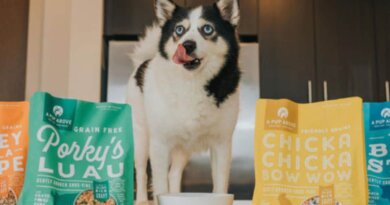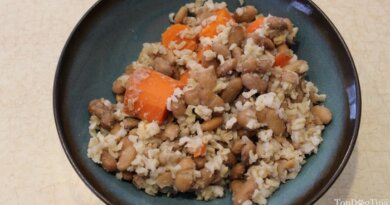Meat and Meat Meal: Sorting Through Animal Protein Sources
A few years ago, we added a new column to the chart full of information that we publish in our annual “approved dry dog foods” list in the February issue. The column tabulates how many dog foods made by each company on the list were made with meat only, meat meal only, and/or a combination of meat and meat meal.
These tabulations do not constitute a judgment about the products listed; they are simply information for dog owners who understand the differences between the terms and the inferences that one can make from that information. But it has come to our attention that many of you aren’t aware of what, exactly, you can infer about a pet food company – or an individual product – from its inclusion of meat, meal, or both on its ingredients panel. So let’s clear this up!
NAMING AND SHAMING
First, though, you need to understand that, for the purposes of this article, when we use the generic phrases “meat” and “meat meal,” we are discussing named meats: chicken and chicken meal, pork and pork meal, beef and beef meal, etc. We don’t include any products on our “approved foods” lists that utilize unspecified protein sources on the ingredients label. When an unnamed animal protein source appears on the ingredients panel, the consumer has no idea of what mammal or type of poultry is in the can or bag.
To repeat: If you see one of the following phrases on the ingredients list of a dog food, you won’t see that dog food on our “approved foods” lists: meat, meat by-products, meat meal, meat and bone meal, poultry, poultry by-products, poultry meal, poultry by-products meal.
Each of these words or phrases have legal definitions when they appear on an ingredient panel. Lacking a word that indicates the species of animal has contributed the “meat” in question, the buyer has no way of knowing what they might be feeding their dog. Is it beef? Lamb? Pork? Chicken? Whatever leftover animal protein source the manufacturer can buy on sale? There is no way to know.
MEATY ISSUES
What we are discussing here and now, though, is the difference between named meats and their named meat meal corollaries. What’s the difference between chicken and chicken meal, beef and beef meal, etc.?
There is a critical clock ticking when it comes to fresh and frozen meats and meat by-products. Refrigeration is costly – and doesn’t hold off degradation of the ingredients for long. Freezing preserves meats longer, but is several factors more costly than refrigeration. Companies that use fresh meats in their pet foods need to get those ingredients into their mixers and extruders quickly; the more time it takes to get from the meat-processing plant to the food-manufacturing plant, the costlier the ingredients become.
If the meat products are not refrigerated or frozen, their quality is heavily impacted by the time and distance it takes them to travel to either a rendering company or a pet food manufacturer. The longer it takes them to be cooked in one form or another, the more bacterial decay and enzymatic breakdown will occur, affecting the quality of the protein and fat.
Pet food makers need to test and control a slew of quality-indicated parameters to make sure the meat-based ingredients are of sufficient quality to be safe, nutritious, and palatable. The quality of the product can be determined by the color and smell of the material, as well as analytical values for protein, available lysine, total lysine, methionine, pepsin digestibility (higher values are equated with higher protein content), peroxide value (higher values mean greater rancidity of the fats), OSI value (indicates the oxidative stability of the fats), ash (more on that in a minute), level and type of amino acids they contain.
MAKE A MEAL OF IT
The ash content in a pet food corresponds almost entirely to the amount of bone that is included in the product’s animal protein sources; it consists of the minerals that would be left if you burned everything in a food that would burn. Foods with an adequate amount of calcium, phosphorus, and other minerals they need – but no more – may contain as little as 2% ash. Super inexpensive, low-quality foods may contain as much as 10% ash, indicating that they were made with animal protein sources that included a lot of bone. Most dog foods contain between 5% and 8% ash.
Meat meals are made through a process called rendering. The process is named “rendering” as it renders volatile, degradable meats into a more stable form. The animal products are subjected to high temperatures, both in order to kill any pathogens and to drive a certain amount of moisture and fat away from the bone and tissue.
Once the product is in a lower-moisture form (around 10%), it will remain relatively stable at room temperatures for months. Meat meals can be shipped and stored for some time, until the pet food producer is ready to make some food.
For these reasons, the smaller the annual sales of a pet food brand, the less frequently it will be made, the more likely it is that the product will be made with meat meals, rather than fresh meats. Meat from exotic species that are in limited supply (perhaps only seasonally) is almost always supplied in the form of a rendered meal.
Competent rendering companies can produce meat meals with a range of fat and “ash” content, and pet food companies will stipulate how much fat and ash they want in the ingredients they buy from the renderer. In general, higher-fat ingredients will cost more than lower-fat ingredients. Lower-ash ingredients cost more than high-ash ingredients.
MEAT-ONLY FOODS
There are companies that have staked their entire reputations on the fact that they use only meats, never meat meals, in their dry dog foods. Is this truly a sign of higher quality?
Actually, there’s something to look out for in those “meat only” (meal-free) dry dog foods: the inclusion (and frequently, the over-representation) of plant-sourced proteins, which have a less desirable amino acid profile than meat (for dogs).
Remember, ingredients are listed on the label in order of pre-processing weight in the food’s formula. Meat contains about 70% moisture and is very heavy, so if it is included in a large enough quantity so as to appear first or second on the ingredient list, it can’t actually be supplying the majority of the product’s protein. This is because the meats that are used in pet food – which actually contain quite a bit of skin, fat, connective tissue, and bone – may contain as little as 8% protein.
In foods that contain both meat and meat meal high on the ingredients list, it’s the meat meal that supplies most of the protein in the product. If there is no meat meal in a dry dog food, it has to have some plant protein sources to boost the protein content to adequate levels. We couldn’t say, then, that we feel these meat-only dry dog food formulations are better.
IMPOSSIBLE TO CONFIRM
We’re sorry to say it, but the factors that most affect the quality of the meat ingredients in dog foods are absolutely impossible to confirm. The source of the ingredients, whether they are kept chilled, the distance to the rendering plant or food-production facility, the amount of time it takes for those ingredients to be processed . . . none of these things are verifiable by consumers (or journalists, in case you were wondering).
Giant conglomerate food companies actually have an advantage here, in that many have rendering and/or pet food manufacturing facilities adjacent to their human food processing facilities, sparing the meat and meat by-products a long journey at the local air temperature.
That said, there must be smaller companies that have located their manufacturing facilities conveniently close to their animal-protein suppliers. And we know that some pet food makers do keep their meat ingredients chilled all the way between the slaughterhouse to their pet food mixing and extrusion or canning equipment. But these facts are difficult to verify and subject to change at a moment’s notice. Consumers (us included) are stuck with having to trust the reputation of the company and performance of the products themselves.








lisinopril 19 mg https://lisinopril.auction/ lisinopril 1.25